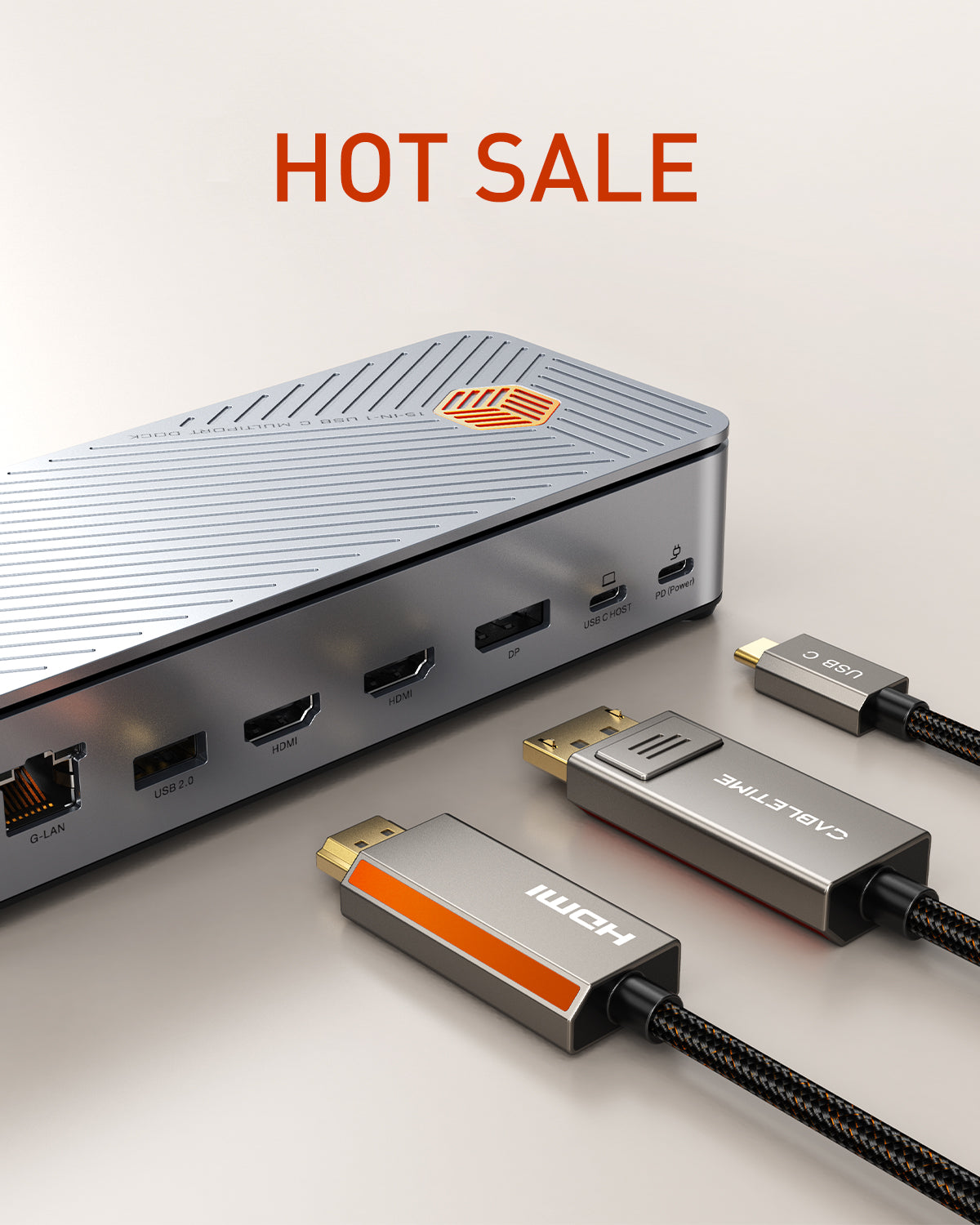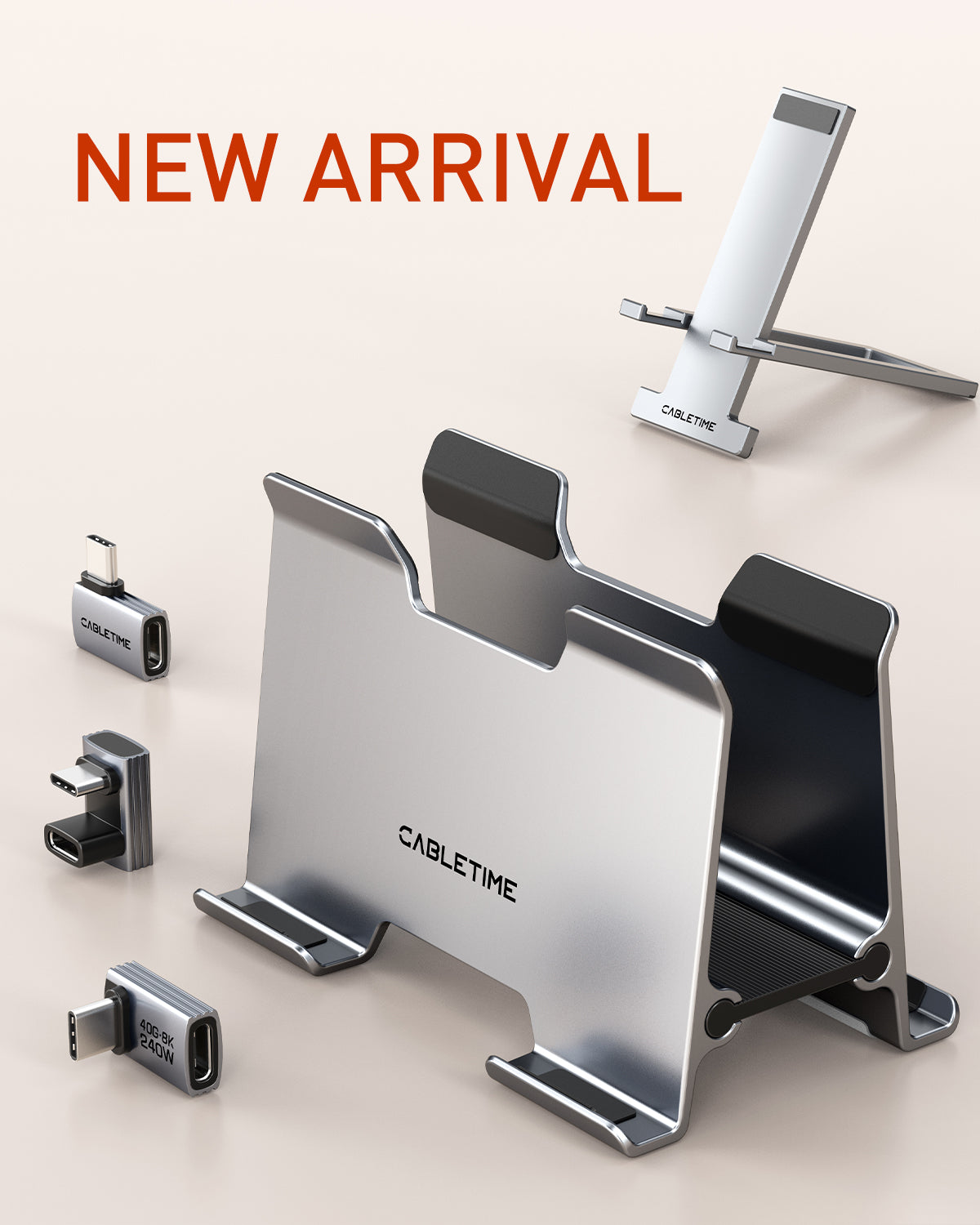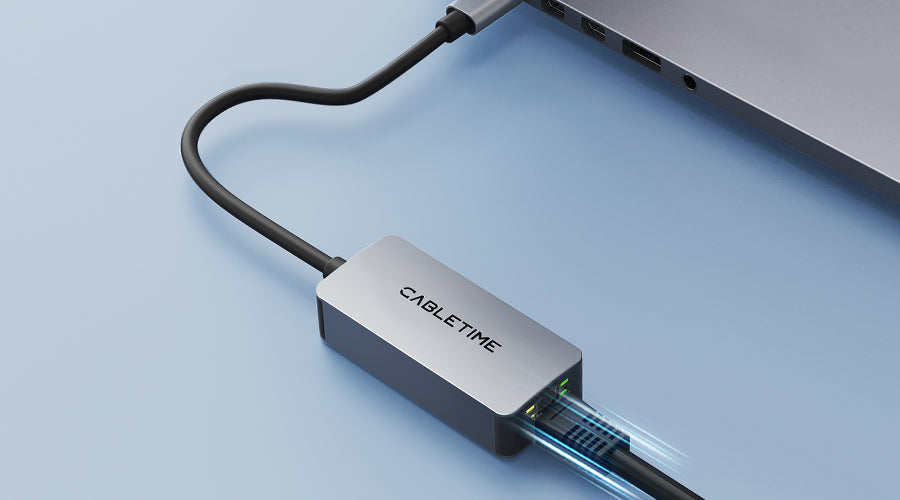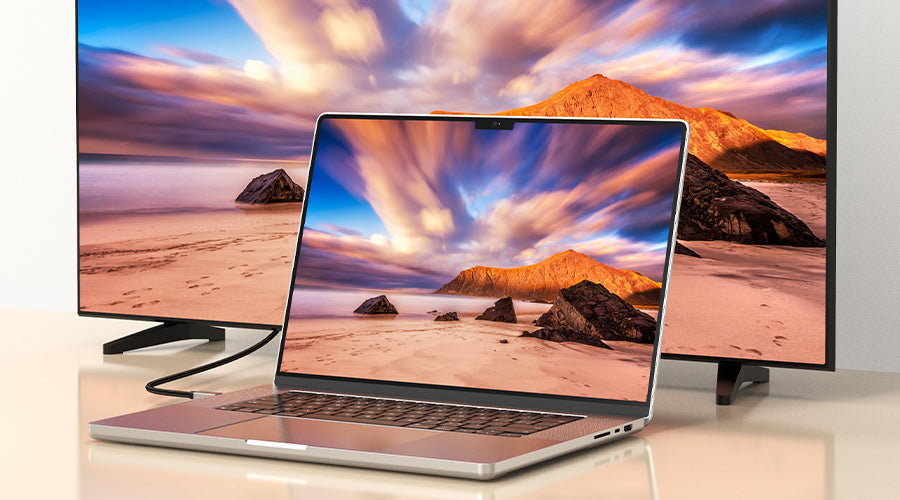Are you looking for the best HDMI (High Definition Multimedia Interface) cable for your device? Need help deciding which version is the best for you? HDMI is the best interface for audio and video transmission. All the latest graphic cards, monitors, TVs, gaming consoles, and soundbars feature an HDMI interface. Its outstanding capability to deliver 8K resolution at 60Hz and solid port design makes it an ideal interface. However, carefully selecting a compatible HDMI cable is critical to enable all its features.
Latest technologies like eARC, Dolby Vision, and Dynamic HDR are now staple features of any modern display device, and they need an accurate connection for operation. Take advantage of these incredible specifications with a high-standard cable. This article will mention all the factors our readers need to consider before purchasing an HDMI cable. Continue reading for more information!
Table of content
- 1. Comparison of the Three HDMI Cable Versions and Enabled Features
- 2. What Other Factors Need Consideration Besides The Core Parameters?
- 3. Pros and Cons of HDMI 1.4
- 4. Pros and Cons of HDMI 2.0
- 5. Pros and Cons of HDMI 2.1
- 6. Development History of HDMI Cable
- 7. Are HDMI Versions Compatible with Each Other?
- 8. How to choose a suitable HDMI cable?
- 9. People Also Ask
Comparison of the Three HDMI Cable Versions and Enabled Features
Let's have a quick look at the comparison between the three most prevalent HDMI version features. Here are some features that modern electronics utilize for audio and video transmission.
|
Feature |
HDMI 2.1 |
HDMI 2.0 |
HDMI 1.4 |
|
Maximum Resolution |
8K@60Hz |
4K@60Hz |
4K@30Hz |
|
Maximum Bandwidth |
48Gbps |
18Gbps |
10.2Gbps |
|
Cable Pins and Wires |
24 |
19 |
19 |
|
Enhanced eARC |
✔ |
✖ |
✖ |
|
QFT (Quick Frame Transport) |
✔ |
✖ |
✖ |
|
ALLM (Auto Low Latency Mode) |
✔ |
✖ |
✖ |
|
QMS (Quick Media Switching) |
✔ |
✖ |
✖ |
|
Dynamic HDR |
✔ |
✔ |
✖ |
|
Variable Refresh Rate (VRR) |
✔ |
✔ |
✖ |
|
HLG (Hybrid Log-Gamma) |
✔ |
✔ |
✖ |
|
Dolby Vision |
✔ |
✔ |
✖ |
|
FreeSync |
✔ |
✔ |
✖ |
|
G-Sync |
✔ |
✔ |
✖ |
|
3D Support |
✔ |
✔ |
✔ |
|
Ethernet Channel |
✔ |
✔ |
✔ |
|
Backward Compatibility (Earlier Versions) |
✔ |
✔ |
✔ |
Technologies like eARC and QFT require an HDMI 2.1 cable. It provides extra bandwidth through its port and wire design. An HDMI 2.0 cable can support eARC compared to enhanced eARC by HDMI 2.1. A device can utilize the limited cable bandwidth by compromising on some other vital features. That is why you need the latest HDMI 2.1 cable to simultaneously enable all of the device's qualities. The addition of 5 wires in the HDMI 2.1 cable also makes the price tag slightly higher than the previous versions, but it's a trade-off tech heads can manage.
What Other Factors Need Consideration Besides The Core Parameters?
Besides having the core 24-pin port and wire design, we need to consider the following factors:
Material of the Link Port
Professionals and gamers who need to carry their equipment and require frequent plugging and unplugging need a solid link port material for long-lasting performance. Home users also need a high-quality link port, as stresses during cable routing can cause damage to the cable. A port comprises a casing, connector, pins, and a shell. Here is the breakdown of the material used in the manufacturing of a link port:
- ABS Plastic or Polyvinyl Chloride (PVC): These are common material choices when selecting a casing. They are light in weight and have a high impact strength. There is a slight difference in density, flexibility, chemical, and fire resistance between ABS and PVC. Generally, ABS is more rigid, while PVC is more flexible.
- Aluminum: Shell is the component that covers the casing for extra durability. A bare plastic-based port is flexible, which can cause the port's metallic internals to loosen with time. An aluminum shell can ensure the plastic does not move enough to cause the internal connector to pop out of place.
- Copper: It is the best material for pins as it is an excellent conductor of electricity in terms of price/performance. Some cables use aluminum or alloy materials as pins but are prone to wear and have lower conductivity. Choose a wire with copper pins for a firm electrical connection.
- Brass: Brass is the first choice of material for a connector. The metal gives the port Type-A, B, C, D, and E shape. It provides sufficient conductivity and toughness to hold all the internals together. Connector undergoes the most wear and tear during plugging and unplugging, so picking a more rigid material is logical.
Cable Material
A high-efficiency HDMI cable uses copper as a conductor. Copper provides the flexibility, strength, conductivity, and corrosion resistance needed for high performance. A tinned copper HDMI cable goes one step ahead by delivering extraordinary protection against corrosion. Marine applications primarily utilize them with massive exposure to humidity and moisture.
A premium-grade HDMI cable uses tinned copper wires, making them slightly more expensive than their bare copper counterparts. Here are the factors that need consideration when selecting an HDMI cable:
- Shielding: The copper wire bunch needs shielding to enhance signal resistance properties. Interference from other electronics can cause noise in the display, directly affecting user experience. The shield material can be fiberglass, nylon, PP, rubber, PVC, or aluminum foil.
- Conductivity: It is the most critical factor in wires. Always go for a cable with a copper conductor, as it has the best conductivity.
- Durability: To add durability, consider tinned copper wires as they last longer with consistent performance throughout their lives.
Material of the Cable Body Wrapping
A substandard cable can get damaged with time due to the manufacturer's choice of cable wrapping material. Frequent travelers may need to carry their wires, which can cause wear during storage, plugging, and unplugging. The cable body wrapping can include any of the following materials:
- Braided Cable Sleeves: They are the best option for cable body wrapping. It provides the flexibility, toughness, and durability that cables need. The material can be Nylon, Polyester, PET, PPS, and Nomex. Nylon is the most commonly used material and has the best performance.
- Heat Shrink: It is a tube of plastic material that shrinks when exposed to heat. Cables wrapped with heat shrinks are great for routing in small spaces.
- Spiral Wrapping: Any material in the form of a sheet wrapped around the cables is called spiral wrapped. These cables are generally pricier and have lower application in electronics.
Pros and Cons of HDMI 1.4
HDMI 1.4 became available to the masses in 2009. The port version is still prevalent in mid-range monitors and TVs. Its cost-effective design and decent features make it still relevant for modern electronics. Let's have a look at its good and bad sides:
Pros
- First to introduce 4K@24Hz support
- Ethernet over HDMI cable
- 3D Display Support
- Audio Return Channel (ARC) Support
- Enables Wider Color Space sYCC601, Adobe®RGB, and Adobe®YCC601
- Type-D and Type-E Port Introduction
Cons
- No 8K Resolution Delivery
- No HDR Support
- No Adaptive Sync Capability for Gaming
Scope of Application
HDMI 1.4, due to its cost-effective design, is still applicable in the following scenarios:
- Small Monitors: HDMI 1.4 is prevalent in 24” and 27” monitors that run on 1080p or 1440p resolution but do not require 4K support.
- Home Theatre System: A budget 5.1 surround sound system can benefit from the bandwidth that HDMI 1.4 offers.
- Set-top Boxes and Streaming Devices: Televisions without Android benefit from set-top boxes with HDMI 1.4 to support 4K resolution.
Pros and Cons of HDMI 2.0
The performance boost over the previous version was significant. The HDMI 2.0 cable kept the same number of pins and wires as the earlier version, but the bandwidth doubled to 18Gbps. Here is a list of some of the benefits and drawbacks:
Pros
- 60Hz refresh rate for 4K resolution
- 7billion color support
- 12-bit color palette
- 32 Audio Channel Capability
Cons
- No VRR Support
- No eARC
- No Dynamic HDR
Scope of Application
HDMI 2.0 is still very popular due to its high bandwidth and relevance to modern electronics. The cables are also budget-friendly and readily available. Here are some of its popular applications:
- Gaming: HDMI 2.0 supports Nvidia G-Sync and AMD Freesync technologies due to high bandwidth. It can handle a 120Hz refresh rate at a relevant 1080p resolution for gamers.
- High-End TVs: Modern televisions require Dolby Vision and dynamic HDR for outstanding sound and visuals. HDMI 2.0 has sufficient bandwidth to support both technologies.
- Car Entertainment System: Cars now have sophisticated video and audio systems that need a proper connection. HDMI 2.0 delivers both the quality and performance required for high-end car systems.
Shop for CABLETIME HDMI 2.0 Cable
Pros and Cons of HDMI 2.1
HDMI 2.1 represents the pinnacle of HDMI technology and is the optimal selection for users desiring the most recent developments. It supports the latest specifications, such as 8K resolution, dynamic HDR, and VRR. It also has a massive 48Gbps bandwidth, which allows for future-proofing and flexibility for designers.
Pros
- Enhanced Audio Return Channel (eARC)
- Quick Frame Transport (QFT)
- Support for 10K resolution
- Low EMI (Electro-Magnetic Interference)
- 240Hz refresh rate at 1440p
Cons
- Requires Ultra High-Speed HDMI Cables
Scope of Application

Modern gaming consoles like Playstation and Xbox require an HDMI 2.1 cable. Subsequently, a TV must also feature an HDMI 2.1 to unlock all capabilities of the brand-new interface. Let's have a look at its widespread applications:
- PlayStation 5: PS5 has an HDMI 2.1 port and supports eARC, Dynamic HDR, VRR, ALLM, and FreeSync. It becomes necessary for users to utilize an Ultra High-Speed HDMI Cable for maximum support.
- Xbox Series X/S: Microsoft's famous gaming console has similar features alongside HLG's (Hybrid Log-Gamma) capability. It needs the bandwidth offered by HDMI 2.1 for proper functionality.
- Gaming PCs: Modern graphic cards can support 240Hz refresh rates and premium audio quality through eARC. Combining them with a high-end monitor can result in unparalleled gaming experience. An HDMI 2.1b cable can allow massive bandwidth for all the features.
- HTPCs: Home theatre PCs are all the rage these days. Users have shifted to PCs instead of home theatre systems for diversity and uncapped capabilities. HDMI 2.1b becomes the computers' most relevant video and audio transmission mode.
Shop for CableTime 8K HDMI 2.1 Cable
Development History of HDMI Cable
1990s
- 1997: Digital Serial Interface (DVI), the predecessor of HDMI-supported high-resolution monitors. However, there was a need for a better standard that worked across multiple devices.
- 1998: Multiple electronic companies came together to form an HDMI working group. They provided resources to establish a new digital interface that ensures device compatibility. The group comprised 70+ members, including Panasonic, Toshiba, Hitachi, and many more.
2000s
- 2002: HDMI 1.0 came out with 4.95 Gbit/s bandwidth per link, similar to DVI. It supports up to 1080p resolution and 8-channel audio.
- 2004: HDMI 1.1 was released, supporting high-fidelity DVD Audio and SACD.
- 2005: HDMI 1.2 became available with its Deep Color (10-bit and 12-bit color) and CEC (Consumer Electronics Control). It was also the first HDMI that supported high refresh rates and a high resolution of 720p@120Hz.
- 2006: HDMI 1.3 released, adding support for x.v.Color (extended color gamut) and HDMI Ethernet Channel (Ethernet over HDMI)
- 2009: HDMI 1.4 released, adding support for 4K resolution at 24Hz, 3D Display Support, Audio Return Channel (ARC), Type-D and Type-E Port Introduction
2010s
- 2013: HDMI 2.0 was released, doubling the bandwidth to 18Gbps, supporting 4K resolution at 60Hz, and adding support for HDR (High Dynamic Range)
- 2017: HDMI 2.1 was released, increasing the bandwidth to 48Gbps, supporting 8K resolution at 60Hz, and adding support for eARC (Enhanced Audio Return Channel), VRR (Variable Refresh Rate), and ALLM (Auto Low Latency Mode)
2020s
- 2022: HDMI 2.1a released, adding support for 8K resolution at 120Hz, and 4K resolution at 144Hz. It enabled all the features of a high-end video and audio device. The 24-pin connector and cable wires provide 48Gbps for unparalleled performance to date.
Are HDMI Versions Compatible with Each Other?
One of the best things that HDMI offers is the backward compatibility. Each new version of HDMI cable is compatible with an older design port. HDMI has a standard Type-A shape connector that all modern electronics utilize. The difference is only in the number of pins and wires. An old HDMI 1.4 cable can work with HDMI 2.0 hardware but with limited capabilities. An HDMI 1.4 does not offer the bandwidth and resistance to support HDMI 2.0 features fully. We can summarize the compatibility in the following bullet points:
- HDMI versions are 100% backward compatible.
- Users can utilize an old HDMI cable for next-generation hardware by limiting its capabilities.
- An HDMI 1.4 cable can work with an HDMI 2.1b display but will limit the resolution to 4K@30Hz.
How to choose a suitable HDMI cable?
HDMI cables come in different sizes, versions, types, and connectors. Finding a suitable cable can be complicated and overwhelming, with many available choices. Depending on the application scenarios, each version can have its benefits. Let's discuss the step-by-step method to find the perfect match for your device:
Step 1: Identify the Requirement of Your Device
All the latest electronics come with specifications identifying the HDMI version. It can be a television, monitor, soundbar, sound system, car entertainment system, graphic cards, smartphone, or any other device that requires audio and video transmission.
Enlist all the technologies your device features: eARC, QFT (Quick Frame Transport), Dynamic HDR, Variable Refresh Rate (VRR), ALLM (Auto Low Latency Mode), HLG (Hybrid Log-Gamma), Dolby Vision, FreeSync, and G-Sync. Then, look for the proper HDMI cable version that supports them.
Tip: A user can simply go for the latest HDMI 2.1b cable, which is backward compatible and will work with any hardware.
Step 2: Determine the Usage Conditions
The quality requirement of the cable depends on the environmental conditions it faces and the usage scenario. Let's look at the different application scenarios and recommended HDMI versions:
- Home Entertainment: The chances of moving around the home entertainment system are slim. A moderately durable cable with eARC for DTS:X and Dolby Atmos is better.
- Industrial Application: Environmental resistance and reliability are critical in industrial applications. A typical industrial display does not require 8K or 10K resolution, so HDMI 1.4a is enough unless you need a large 10K display.
- Gaming Consoles: Xbox X/S and PlayStation 5 require HDMI 2.1b to utilize high bitrate audio and video quality. The need for Dynamic HDR, VRR, ALLM, and FreeSync makes HDMI 2.0 and 2.1 the only choices for next-generation gaming consoles.
- Professional Video Editing: An accurate color palette and combination is vital. Professionals need video editing to be in its most natural form. HDMI 2.1b with its BT.2020 with 10, 12, and 16 bits per color component is ideal for editors.
- Office Projectors: Meetings and professional environments rarely need a high refresh rate. HDMI 1.4a is more than enough in these scenarios as it offers 4K resolution support. The focus should be on the build quality, as there could be a lot of cable routing.
- Digital Signage: Billboards and signs face a demanding environment. Therefore, reliable and durable cable is essential. HDMI 1.4a is also enough in this scenario as the display does not need a high refresh rate or ultra-high resolution.
- High-End Gaming Computers: If one thing can push the limits of technology, then it's high-end gaming PCs. They need the latest and greatest to ensure low latency, high refresh rate, and pixel-dense video. The need for high-fidelity audio for precision is also virtual for competitive gaming. HDMI 2.1b cable is the only choice for high-end gaming computers.
- Medical Optical Imaging Equipment: HDMI 1.4 is ideal for medical optical imaging equipment. The high resolution, wide color gamut, and HDCP support make it a perfect choice for medical imaging applications.
Step 3: Select the Right Type
- Standard HDMI Cable: It's another name for the HDMI 1.4 cable. It is the most common HDMI cable version used in sound systems, TVs, and gaming consoles, with support for 4K@30Hz and 1080p@60Hz.
- High-Speed HDMI Cable: If your display equipment supports 4K@60Hz, 1080p@120Hz, and 4K HDR content, then it's the suitable cable for you. It is compatible with the HDMI 2.0 version ports.
- Ultra High-Speed HDMI Cable: It can deliver 48Gbps of bandwidth and supports all the latest video and audio technologies. If you want to future-proof your setup and enable dynamic HDR, VRR, and eARC, this HDMI 2.1b compatible cable is the best.
- Active Optical (AOC) Fiber HDMI Cable: Users can opt for the premium-grade, best-performing HDMI cable with lossless transmission. AOC is the best cable type. It's applicable in medical, industrial, broadcasting, and theatre room scenarios. An AOC can go as far as 330 feet, which is impossible in standard copper cables. It's the best type for long-distance transmissions.
Step 4: Ensure that the Cable is Authentic
To ensure that the cable is authentic, make sure that it has the following identifications:
- Standard HDMI Cable Logo label
- QR Code
- Holographic Image only Scannable by HDMI Cable Certification App
- Cable Jacket has Ultra High-Speed HDMI Cable printed

Step 5: Consider Additional Features
Features like the wires, port, jacket, and shielding material can also affect its performance in different conditions. Some materials are highly durable in certain situations, while others might fail. Users should consider these factors:
- Connector: The connector can be gold-plated and made of raw copper or brass. Frequent travelers should go for gold plated or brass, depending on the moisture exposure. Home users can use any other materials as the environment is not harsh.
- CL3 or CL2 Rating: These ratings indicate that the cable is suitable for in-wall installation. They have Aluminum foil or braid fire resistance jackets and can carry large surges up to 300 watts.
Shop for CableTime HDMI Cables
People Also Ask
1. Can I use HDMI 1.4 on the 2.1 port?
Yes, you can use HDMI 1.4 on a 2.1 port as they are backward compatible. However, you will have limited resolutions, up to 4K@30Hz and 1080p@60Hz. The limited number of wires and construction of an HDMI 1.4 cable limits its performance. As the connectors of both HDMI versions are Type-A shape, they work across each other.
2. Can I use HDMI 1.4 for 4K?
HDMI 1.4 was one of the first high-definition multimedia interfaces with 4K resolution support. It can deliver a 30Hz refresh rate, which can look like stuttering during moments of high activity in videos. Using an HDMI 1.4 cable for 4K gaming is not recommended.
3. Can HDMI 1.4 do HDR?
No, HDMI 1.4 cannot provide HDR. The first version to feature HDR (high dynamic range) was HDMI 2.0. It is the most basic form of color dynamics. However, you will need a compatible TV or a monitor to display the HDR color grading.su
4. Do I need HDMI 2.1 for Dolby Atmos?
HDMI 2.1 can support Dolby Atmos due to its extraordinary 48Gbps of bandwidth. However, Dolby Atmos became available with the launch of HDMI 2.0. Compared to the HDMI 1.4, the number of channels went from 8 to 32. However, in audio, eARC is only available with HDMI 2.1.






Leave a comment
This site is protected by hCaptcha and the hCaptcha Privacy Policy and Terms of Service apply.